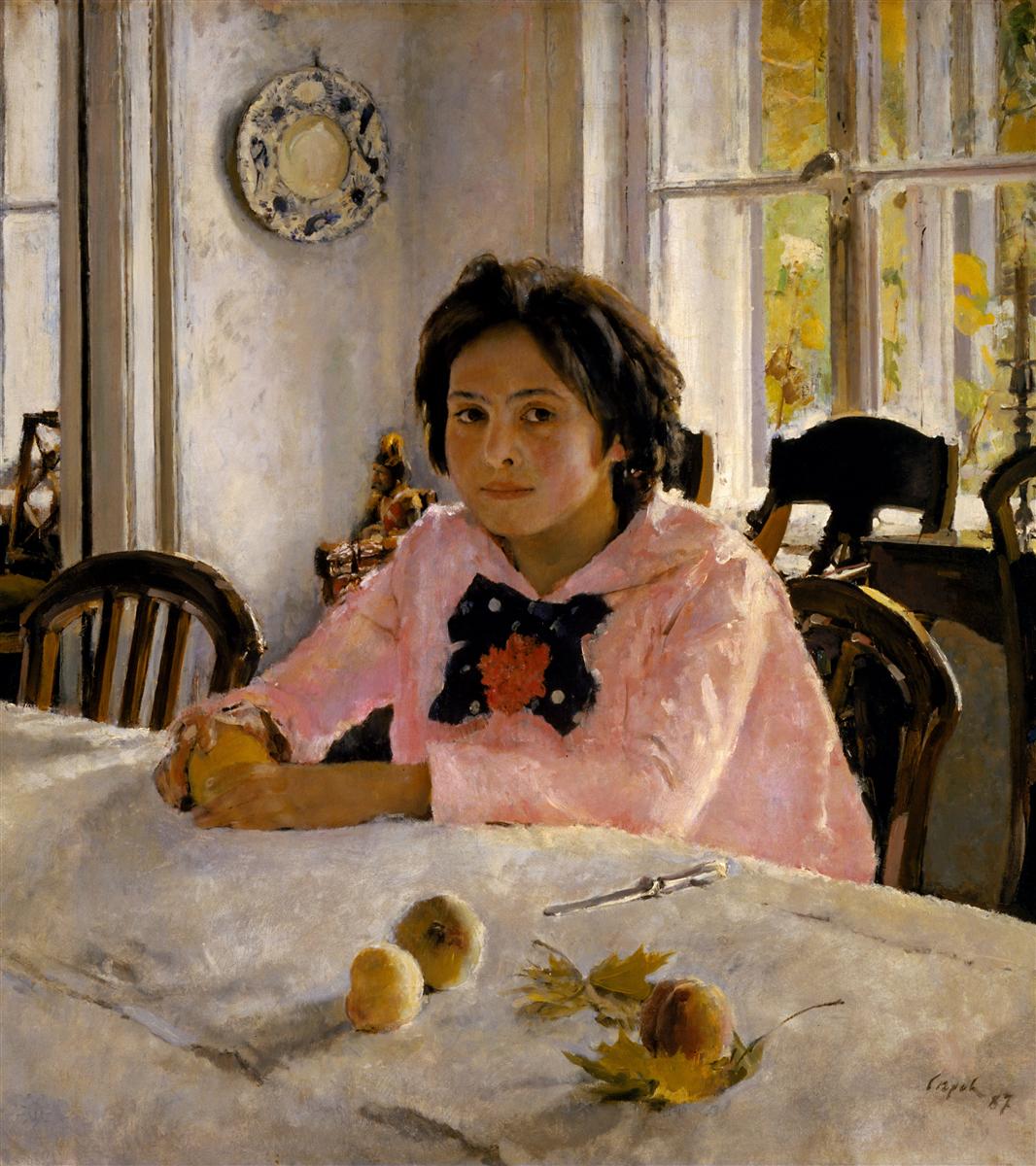Once upon a time, as a ten-year old girl, I found myself contemplating “the three wishes” I would ask a fairy to fulfil; not that I really believed in fairies, but I reckoned it would make sense to be prepared just in case.
I had some qualms about my appearance, so the first thought that floated up my mind was “beauty”, but I had read enough fairy tales to be careful. I knew all the fairies have this uncanny ability to turn one’s wishes upside down by understanding them too literally. I imagined that if I asked for “beauty”, without any specifics, I might accidentally turn into some kind of boring and stupid “ideal”, which would have nothing to do with me. For example, I was sure I would by no means want to end up as a fair blue-eyed blonde; I’d rather turn into a frog.

Faced with this very real danger, I spent some time trying to make my wish more specific and close any potential loopholes for the future fairy’s mischief, but the more I thought about it, the more hopeless the whole enterprise seemed: whatever desirable quality I tried to formulate with the required precision, my mind would immediately come up with some overblown, absurd visual interpretation. I ended up resolving that I’d rather remain as I am, with all my imperfections on my head, than risk any of the fairy’s cosmetic efforts.
Thus, as a child, I stumbled upon the conflict between beauty and individuation, this feeling that turning into a perfect beauty may, by the same token, turn me into some “non-me” (and the resulting impossibility to describe beauty as a set of specific qualities), which, according to Stephen Greenblatt, originates in Renaissance ideas on beauty. He begins his essay on “Shakespearean beauty marks” (in the Shakespeare’s Freedom) with this quote from Leon Battista Alberti’s Art of Building:
“[Beauty] is that reasoned harmony of all the parts within a body, so that nothing may be added, taken away, or altered, but for the worse… ”
Greenblatt writes:
“The cunning of this definition is its programmatic refusal of specificity. It is not this or that particular feature that makes something beautiful; rather it is an interrelation of all the parts in a whole.”
This way to think of beauty explains
“<…> why there is so little specificity in Renaissance accounts of beauty, including Shakespeare’s. Responses to beauty are everywhere in his work, and they are often remarkably intense, but for the most part they are, to borrow Musil’s phrase, “without qualities”. “Those parts of thee that the world’s eye doth view,” begins sonnet 69, “Want nothing that the thought of hearts can mend.” The visible beauty of the beloved literally leaves nothing to the imagination, and the fact that the parts are not specified in any way only reinforces the sense that the effect is produced not by this or that attractive attribute but by a harmonious integration of ideal proportions.”
Indeed, although the young man’s beauty is a major “hero” of the sonnets, we know next to nothing about how he actually looks. There is no specific image, no individual features; nothing to help us picture him. His beauty might leave nothing to the viewer’s imagination, but the way it is translated into sonnets leaves (paradoxically) everything to the reader’s imagination (so I, for example, am free to imagine him as Titian’s young man with a glove). Greenblatt’s point, though, is that this very lack of individuation is a representation of the Renaissance highest ideal of beauty, which finds its expression in painting as well:
“Featurelessness is for Elizabethan culture the ideal form of human beauty. In her many portraits the queen’s clothes and jewels are depicted with fantastic attention to detail, but her face again and again is a blank, expressionless mask. Perhaps, despite the intense emphasis on materiality in the representation of dress, the mask of the face is the Renaissance intimation of what Schiller called the “annihilation of the material” in a truly beautiful work of art or what Winckelmann termed the quality in beauty of Unbezeichnung: “Beauty should be like the most perfect water drawn from the lap of the spring, which, the less taste it has, the healthier it is considered to be, because it is purified of all foreign parts.” The figures Shakespeare celebrates as beautiful cannot altogether float free of matter, but the conspicuous lack of content in the term beauty, as he uses it, is a gesture toward this freedom.”

Any sign of individuation, any mark of uniqueness, any kind of personality can only be a deviation from the ideal canon of beauty. In short, what makes us different — distinguishable from one another in any way — is what makes us ugly.
In Shakespeare’s time, according to Greenblatt, this fusion between individuation and ugliness was underscored by the fact that blemishes (moles, birthmarks, scars) and deformities were the only evidence available to identify someone, be it — as often happens in Shakespeare’s comedies — a long-lost child, a fallen soldier on the battlefield, or a run-away slave. In absence of dental records, fingerprints, and DNA samples, if you are to be recognised at all, it’s by blemishes on your skin and deformities of your body, these obvious deviations from the ideal human being. As an aside, I cannot help thinking that our age of Botox and Photoshop has but materialised the Renaissance ideal of expressionless faces and spotless bodies.
Shakespeare, on the contrary, did a lot to subvert this ideal — I will return to this theme when I come to the “dark lady” sonnets. The “young man” sonnets, though, seem to embody the ideal of featureless perfect beauty, but with one important qualification: what is challenged in this sequence is the mythological (one might even say, spiritual) foundation of this ideal, the implied Neo-Platonic link between goodness and beauty, between sin and ugliness.
Greenblatt traces the idea of featureless beauty to the power of Christianity:
“For centuries, Jesus and Mary were both routinely described, in the most literal as well as metaphoric sense, as immaculate, uniquely born without blemish or mark. Beauty, writes a mid-seventeenth-century English clergyman, “consists in three particulars; the perfection of the lineaments, the due proportion of them each to other, and the excellency and purity of the colour. They are all complete in the soul of Christ.” And it is not Christ’s soul alone, the preacher observes that is the epitome of perfect beauty, but his body as well.”

The reference is to a book of sermons preached by the Reverend Dr. Mark Frank, printed in 1672. The reverend goes on to observe that every human being ever born has some defect, some kind of stain or mole; in fact, if we cannot see one another’s ugliness (representing outwardly our inescapable sinfulness), it’s only because of congenital defect of our vision. Greenblatt writes:
“Such defect, in this time-honoured Christian vision (a vision that effortlessly crossed the boundary dividing Catholic and Protestant), is the outward mark of the inner sin that stains all humans from their conception. Could we see with perfectly clear eyes, we would find nothing to praise in mortal bodies.”
The perfect beauty, then, is the outward manifestation of perfect goodness and innocence, impossible for mortals:
“Thus it is only in and with Christ, in the resurrected bodies of those who are saved, that human beings are cleansed of their unsightly blemishes. At the Last Judgment, according to theologians, all scars, wrinkles, and other marks on the flesh of the blessed would disappear, and each individual body would achieve its perfect form. All forms of “spottedness,” as John Wilkins enumerated them—“Blemish, Blot, Blur, Mote, Mole, Freckle, Speck, Stain, Soil”—would be erased.”
From this vantage point, the young man’s perfect, indescribable beauty is as subversive as it gets (if not outright blasphemous), especially because his inner goodness (the beauty of thy mind) is often questioned, in sonnet 69 as in many others. There is something no less subversive — and, in some strange way, fascinating — in the idea that today’s Botox parlours, along with the whole industry of commercialised beauty standards and artificial eternal youthfulness, are deeply rooted in medieval Christianity: what they sell, indeed, is nothing short of earthly resurrection.
As a painter, I was particularly struck by the idea of “congenital defect of vision”, which — apparently — prevents us from seeing “with clear eyes” that there is no beauty in this world. What is it that makes us blind to one another’s ugliness? The answer, though, has nothing to do with painting. It was given long ago (Greenblatt quotes Lucretius and Shakespeare on this, but they are certainly not alone): it’s love that makes us blind, and it’s the one we love that we see as most beautiful.
But the effect is broader than the concept of romantic love suggests, because one doesn’t see everyone else as ugly either, at least not always. We see everything through the mind’s eye, and there are moods that make one see inherent ugliness everywhere, but there are also states of mind which make everything and everyone beautiful. And this — quite unexpectedly — leads me to an absurdly optimistic conclusion that the humankind is more capable of love than we generally give ourselves credit for — insofar as we don’t see this ugliness in everyone the Reverend Dr. Mark Frank talks about. What he sees as our congenital blindness is, by this reckoning, just our inborn love and compassion for one another.
The question remains, of course, whose eyes are “clear” (or at least clearer): the eyes of someone who loves, or the cold eyes of someone perfectly indifferent? The eyes (and mind) of someone who sees beauty or the eyes of someone who sees ugliness? This is, to me, but one version of the eternal question of whether we say “yes” or “no” to life — and, frankly, I am all for “yes-saying” (as, I believe, is Shakespeare, most of the time), which means — doesn’t it? — that love clears our vision rather than blinds us.
[share title=”If you’ve enjoyed reading this post, please consider sharing it with your friends!” facebook=”true” twitter=”true” google_plus=”true” linkedin=”true” pinterest=”true” reddit=”true” email=”true”]